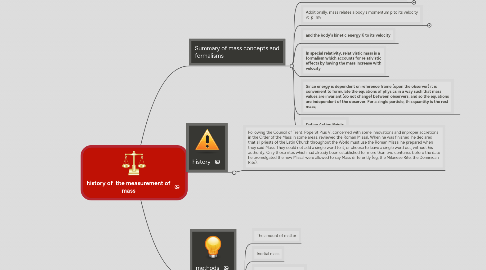history of the measurement of mass
por myra anja


1. Summary of mass concepts and formalisms
1.1. In classical mechanics, mass has a central role in determining the behavior of bodies. Newton's second law relates the force F exerted in a body of mass M to the body's acceleration α: F=ma
1.1.1. Goal 1
1.1.2. Goal 2
1.2. Additionally, mass relates a body's momentum p to its velocity v: p=mv
1.2.1. Session Rule 1
1.2.2. Session Rule 2
